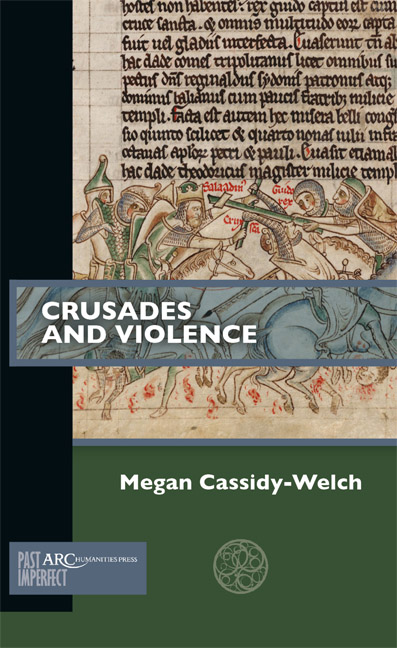Chapter 2 - Bodies and Violence
Published online by Cambridge University Press: 13 February 2024
Summary
Recently Hannah Skoda has emphasized the idea that medieval violence was a form of communication which, like other forms of communication, possessed “shared norms and conventions: or grammars” (Medieval Violence, 18). The idea that violence communicates something that is founded on shared codes of meaning is a useful point from which to proceed when exploring who was understood to be a legitimate target of crusading violence during the central Middle Ages. In so doing, we find that crusade justifications of violence toward specific groups and individuals were also built on shared ideas and assumptions about the nature and meaning of the physical body. These ideas and assumptions created what we might describe as the “behavioural scripts” of violence; that is, the practice, conduct, and communication of social and cultural norms through the exercise of violence.
An extensive literature on the medieval body over the last decades has analyzed the body's fluidity, connection to spiritual states, performativity, medicalization—its legibility, as Skoda and others have explained. The contexts that shaped such bodily states or categories (theology, law, centres of learning, custom and tradition, the family, storytelling, and so on) also shaped cultures of crusading, itself a vehicle for bringing together and playing out a whole range of ideas about the body in its formulation and practice. Clearly, there was never a singular “medieval attitude toward the body.” But in the western intellectual, Christian, and Latinate cul tures of the twelfth and thirteenth centuries, there were certainly shared understandings of the body and its meanings. These informed the thought-worlds of crusading. Indeed, to think about meanings and manifestations of crusading violence is to dive deep into the complexity of attitude toward different medieval bodies. Focussing on the idea of the body helps us to understand how crusade violence was fundamentally corporeal in every aspect.
The body was central to the mission of the crusade in three main ways. The body of the “other” was constructed as a legitimate target of violence; the body of the crusader was constructed as the appropriate instrument through which cru-sading was practised and reified; and the body of Christ was a central motif to the justification and practice of crusading vio-lence. We might also think about the importance of intention when it came to bodily violence in crusading warfare. What was violence against particular bodies meant to achieve?
- Type
- Chapter
- Information
- Crusades and Violence , pp. 43 - 68Publisher: Amsterdam University PressPrint publication year: 2023



